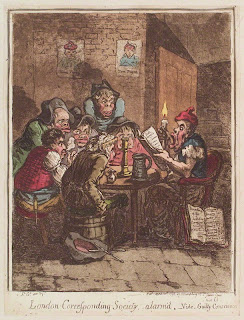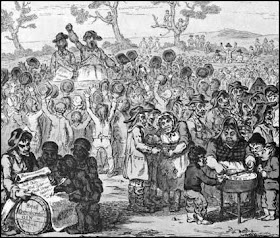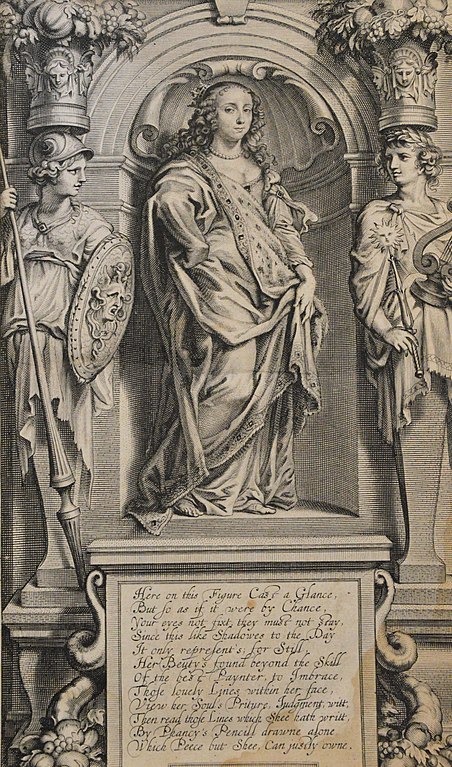by Ben Davies
The 18th century western borders of the fledgling United States of America were exciting, dangerous and alive with rumour.
West – always west.
Into the putative Louisiana territory, an almost unimaginable vastness nominally under the rule of the French Empire but in truth as unexplored by Europeans as the surface of the moon. Just as the stories of El Dorado had pushed the Conquistadors deeper and deeper into South America, so strange rumours were enticing the brave of heart into the interior of this terra nova.
There were natives, so people said, natives who spoke Welsh. A priest from Glamorgan had been spared when his would-be killers had heard him praying in a language the savages had understood. The Madoc tribe had, in their possession, fragments of Welsh bibles. Skeletons had been dug out of burial mounds clad in bronze armour engraved with the sigils of the house of Gwynedd.
As if to put a stamp of government approval on the stories, the explorers Lewis and Clarke were handed grave instructions by Thomas Jefferson as they set off to explore the interior:
Take Welsh speakers with you; take tribute for when you encounter the descendants of the Welsh prince who had landed on these shores centuries before the Genovese bauble merchant had done it in 1492.
Madoc is a shadowy figure, elusive and hard to pin down to more than a rumour. The sixteenth illegitimate son of the extraordinarily fecund Owain Ap Gwynedd, he was the only man who could truly be called the King of Wales.
There is evidence of an epic lost poem of his life in the same vein as Robin Hood and Blondel’s song, and that he was a real person was accepted as fact for over 400 years.
The story goes that Madoc, sickened by the fratricidal nature of the royal succession after the death of his father, made two journeys (some sources say three) out onto the Atlantic. Returning from the first journey the prince told of a land decked out in timber, great herds of deer and coastlines choked with fish. His final fleet of ten ships left north Wales in 1170 and disappeared over the horizon.
The land Madoc discovered was first identified as the Americas by Elizabeth I’s minister of state and court magician John Dee. In a counter claim to the Spanish and Portuguese hegemony of the new world he wrote, "The Lord Madoc, sonne to Owen Gwynedd, Prince of Gwynedd, led a colonie and inhabited in Terra Florida or thereabouts" in 1170.
The story rolled on in the early years of the fledgling United States, and for the believers the evidence was all around them. With the same arguments that fuelled the myth of Prester John in Africa, many pointed to giant earthworks in the Mississippi area fashioned by who alone knew?
How, ran the argument, could a savage race with no draught animals, metal tools, written language or knowledge of higher mathematics possibly have created such impressive structures as the 300 foot high Monks Mound (which, taking into account settling of the compacted earth is comparable to the pyramids of Giza). Surely white Christians, those ordained by God to rule the lesser races, must have brought their skills and knowledge to this new Eden.
The Welsh Indians never materialised, but the possibility of their existence pushed the great migration west for many thousands, particularly from Wales, looking for a better life.
~~~~~~~~~~~~~
Having idly collected snippets on Madoc for the best part of a decade, Ben Davies finally took the plunge into writing historical fiction with this tale of discovery and violence. He is currently working on a trilogy of books on the Norman Conquest.
Hinterland- A Tale of the New World is available at Amazon.
The 18th century western borders of the fledgling United States of America were exciting, dangerous and alive with rumour.
West – always west.
Into the putative Louisiana territory, an almost unimaginable vastness nominally under the rule of the French Empire but in truth as unexplored by Europeans as the surface of the moon. Just as the stories of El Dorado had pushed the Conquistadors deeper and deeper into South America, so strange rumours were enticing the brave of heart into the interior of this terra nova.
There were natives, so people said, natives who spoke Welsh. A priest from Glamorgan had been spared when his would-be killers had heard him praying in a language the savages had understood. The Madoc tribe had, in their possession, fragments of Welsh bibles. Skeletons had been dug out of burial mounds clad in bronze armour engraved with the sigils of the house of Gwynedd.
As if to put a stamp of government approval on the stories, the explorers Lewis and Clarke were handed grave instructions by Thomas Jefferson as they set off to explore the interior:
Take Welsh speakers with you; take tribute for when you encounter the descendants of the Welsh prince who had landed on these shores centuries before the Genovese bauble merchant had done it in 1492.
Madoc is a shadowy figure, elusive and hard to pin down to more than a rumour. The sixteenth illegitimate son of the extraordinarily fecund Owain Ap Gwynedd, he was the only man who could truly be called the King of Wales.
There is evidence of an epic lost poem of his life in the same vein as Robin Hood and Blondel’s song, and that he was a real person was accepted as fact for over 400 years.
The story goes that Madoc, sickened by the fratricidal nature of the royal succession after the death of his father, made two journeys (some sources say three) out onto the Atlantic. Returning from the first journey the prince told of a land decked out in timber, great herds of deer and coastlines choked with fish. His final fleet of ten ships left north Wales in 1170 and disappeared over the horizon.
 |
| John Dee |
The story rolled on in the early years of the fledgling United States, and for the believers the evidence was all around them. With the same arguments that fuelled the myth of Prester John in Africa, many pointed to giant earthworks in the Mississippi area fashioned by who alone knew?
 |
| The Kincaid Site in Massac County, Illinois. Oil on canvas painting by and courtesy of Herb Roe |
The Welsh Indians never materialised, but the possibility of their existence pushed the great migration west for many thousands, particularly from Wales, looking for a better life.
~~~~~~~~~~~~~
Having idly collected snippets on Madoc for the best part of a decade, Ben Davies finally took the plunge into writing historical fiction with this tale of discovery and violence. He is currently working on a trilogy of books on the Norman Conquest.
Hinterland- A Tale of the New World is available at Amazon.







































